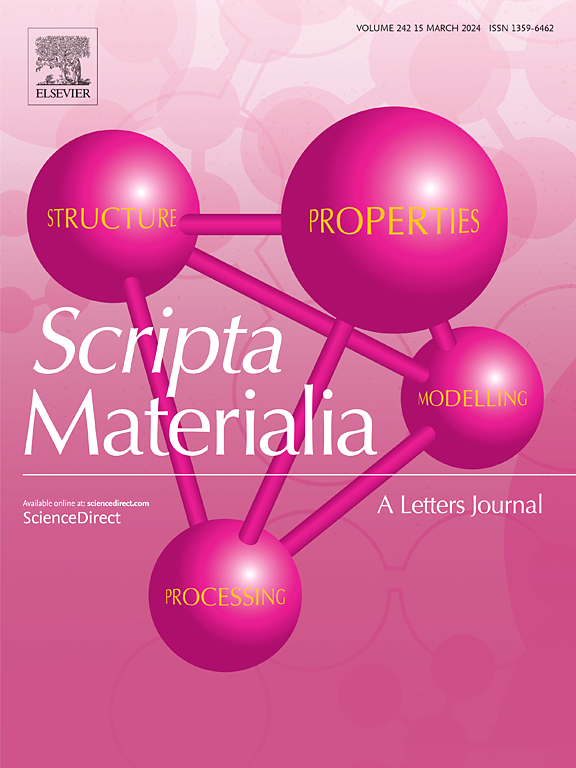Unusual {202¯1} twinning behaviors in deformation-induced hexagonal high-entropy alloy
IF 5.3
2区 材料科学
Q2 MATERIALS SCIENCE, MULTIDISCIPLINARY
引用次数: 0
Abstract
{21} twinning had been theoretically predicted for several decades but rarely observed in hexagonal close-packed (hcp) metals. A CrMnFeCoNi high-entropy alloy with a face-centered cubic (fcc) structure at room temperature can undergo martensitic transformation into an hcp structure when deformed at low temperatures. Most surprisingly, we for the first time observed {21} deformation twins in the deformation-induced hcp-ε grains. Twin boundaries (TBs) are found to deviate from the twinning plane, relaxing into the terraced interface which is composed of (101)M||(100)T interfaces and (0001)M||(103)T steps. Due to local heating associated with plastic work, reverse martensite transformation from hcp to fcc occurs in twins and the adjacent matrix through two paths, but their paths in twin and matrix are correlated to each other across TBs. These findings enrich the knowledge of deformation twinning in hcp metals and alloys.
形变诱导六方高熵合金的异常{202¯1}孪晶行为
{202¯1}孪生在理论上已经预测了几十年,但很少在六方密排金属中观察到。常温下具有面心立方(fcc)结构的CrMnFeCoNi高熵合金在低温变形后可发生马氏体向hcp组织的转变。最令人惊讶的是,我们首次在变形诱导的hcp-ε晶粒中观察到{202¯1}变形孪晶。发现孪晶边界(tb)偏离孪晶平面,松弛成由(101¯1)M||(101¯0)T界面和(0001)M||(101¯3)T台阶组成的阶梯界面。由于与塑性加工相关的局部加热,孪晶和相邻基体通过两条路径发生从hcp到fcc的反向马氏体转变,但孪晶和基体中的路径在孪晶和基体中相互关联。这些发现丰富了hcp金属和合金中变形孪晶的知识。
本文章由计算机程序翻译,如有差异,请以英文原文为准。
求助全文
约1分钟内获得全文
求助全文
来源期刊

Scripta Materialia
工程技术-材料科学:综合
CiteScore
11.40
自引率
5.00%
发文量
581
审稿时长
34 days
期刊介绍:
Scripta Materialia is a LETTERS journal of Acta Materialia, providing a forum for the rapid publication of short communications on the relationship between the structure and the properties of inorganic materials. The emphasis is on originality rather than incremental research. Short reports on the development of materials with novel or substantially improved properties are also welcomed. Emphasis is on either the functional or mechanical behavior of metals, ceramics and semiconductors at all length scales.
 求助内容:
求助内容: 应助结果提醒方式:
应助结果提醒方式:


